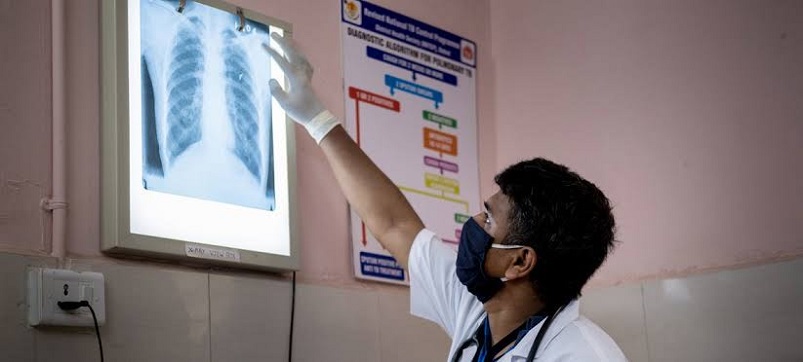
By Ateeb Ahmad Parray
Kashmir is a region located in the northern part of the Indian subcontinent, divided between India and Pakistan, and has a population of approximately 14 million people. In the strife-ridden region, Tuberculosis (TB) is a major public health concern with a high incidence rate and prevalence.
TB is a serious infectious disease caused by the bacterium Mycobacterium tuberculosis that primarily affects the lungs but can also spread to other parts of the body. The main factors contributing to the high burden of TB in Kashmir are poverty, malnutrition, overcrowding, lack of awareness, inadequate healthcare facilities, and social stigma. The difficult terrain and climatic conditions of the region also pose a challenge to the effective management of TB.
The prevalence of TB in Kashmir is estimated to be around 366 cases per 100,000 population, which is significantly higher than the national average of 211 cases per 100,000 population. The incidence rate of TB in Kashmir is also high, with an estimated 54,000 new cases reported every year.
One of the major challenges in the management of TB in Kashmir is the emergence of drug-resistant TB. The improper use of antibiotics and lack of adherence to treatment regimens have contributed to the development of drug-resistant TB in the region. The incidence of multi-drug-resistant TB (MDR-TB) and extensively drug-resistant TB (XDR-TB) is also increasing in Kashmir.
The government of India has taken several measures to control TB in Kashmir, including the implementation of the Revised National Tuberculosis Control Program (RNTCP). The RNTCP provides free diagnosis and treatment of TB and MDR-TB to all patients. The program also includes the use of GeneXpert technology, which enables rapid diagnosis of TB and drug-resistant TB.
The government has also set up a network of Directly Observed Treatment Short-course (DOTS) centers in Kashmir, which provide TB diagnosis and treatment services. The DOTS centers are staffed by trained healthcare professionals who ensure that patients receive proper treatment and adhere to the treatment regimen.
In addition to these efforts, various non-governmental organizations (NGOs) are also working to control TB in Kashmir. These organizations focus on raising awareness about TB, providing diagnostic and treatment services, and conducting research to develop new treatments and diagnostic tools.
Despite being preventable and curable, TB continues to be a major public health challenge, particularly in low and middle-income countries. In India, the situation is particularly concerning with the country accounting for a quarter (about 27%) of the global TB burden. In Kashmir, the situation is even more concerning with high rates of TB incidence and prevalence. To effectively control TB in the region, it is essential to address the underlying socio-economic factors that contribute to the spread of the disease. Improved living conditions, better nutrition, and increased awareness about TB can go a long way in reducing the burden of the disease in Kashmir.
One of the major hurdles to effectively controlling and treating TB in Kashmir is a lack of awareness about the disease among the general population. This leads to late diagnoses, delayed treatments, and ultimately, the spread of the disease. Compounding this issue are the inadequate diagnostic facilities and poor health infrastructure in the region, making it difficult for those in need to access proper care and treatment. People affected by TB also face significant stigma and discrimination, further preventing them from seeking help and exacerbating the spread of the disease. Studies show that the burden of TB in Kashmir is particularly high among women and children, with a higher incidence and prevalence of the disease among these groups compared to men. This is due to a combination of factors, including poor living conditions, limited access to healthcare services, and stigma and discrimination.
The consequences of tuberculosis can be significant, affecting both individuals and the wider community. Some of the potential consequences of tuberculosis in Kashmir include:
1. Morbidity and Mortality: One of the most significant consequences of TB in Kashmir is the impact on individual health. The disease can cause serious health complications and can be fatal if left untreated. It can also lead to long-term health problems and disabilities, which can affect a person’s quality of life and overall wellbeing. The symptoms of TB include persistent coughing, fever, weight loss, and night sweats, and in severe cases, the disease can cause lung damage and other organ failures.
2. Economic Burden: Another significant consequence of TB in Kashmir is the economic burden it places on individuals and families. The medical expenses associated with treating TB can be substantial, and individuals with the disease may need to take time off work, resulting in loss of income. Furthermore, the reduced productivity of those affected by TB can also have a significant impact on their financial wellbeing, as well as the wider economy. The economic costs associated with TB can also be exacerbated by the social stigma and discrimination that people with TB often experience, leading to further financial hardship.
3. Stigma and Discrimination: Stigma and discrimination are also major consequences of TB in Kashmir. People affected by the disease may experience stigma and discrimination, which can lead to social isolation and reduced quality of life. This stigma can also discourage individuals from seeking medical treatment, further exacerbating the impact of the disease on the community. In addition, people with TB may face discrimination in the workplace, making it difficult for them to earn a living and support themselves and their families.
4. Spread of the Disease: The disease is highly contagious and can spread easily from person to person through the air when an infected person talks, coughs, or sneezes. This increases the risk of a TB outbreak and exacerbates the impact of the disease on the community. In addition, the lack of effective preventive measures and limited access to medical care can make it difficult to control the spread of TB in Kashmir.
5. Impact on the Healthcare System: The burden of TB can strain the already limited healthcare resources in Kashmir, reducing the overall effectiveness of the healthcare system and limiting access to other essential health services. The healthcare system in Kashmir is facing significant challenges, including limited funding, inadequate infrastructure, and shortage of healthcare professionals. The burden of TB can further increase the strain on the healthcare system, making it difficult for people to access the medical care they need.
These consequences highlight the importance of addressing the neglected burden of tuberculosis in Kashmir, and the need for effective TB control and treatment programs to reduce the impact of the disease on the region. To effectively address this neglected burden, a comprehensive and integrated approach is required, encompassing several key areas of intervention.
1. Strengthened Awareness: One of the major challenges in addressing the neglected burden of TB in Kashmir is the lack of awareness among the population. This lack of awareness is driven by a number of factors, including the stigma and discrimination associated with the disease, as well as the limited access to information and education on the symptoms, causes, and treatment of TB. To overcome these challenges, it is essential to launch a comprehensive awareness-raising campaign, utilizing various platforms such as mass media, community-based activities, and health education programs.
2. Improved Diagnostic Facilities: The inadequate diagnostic facilities in Kashmir are another major challenge in addressing the neglected burden of TB. To overcome this, the healthcare system needs to invest in improving the diagnostic capacity of existing health facilities and increasing the availability of rapid and reliable diagnostic tools, such as the Xpert MTB/RIF test. Additionally, it is important to ensure that these diagnostic facilities are accessible to all, including those in remote and underserved areas.
3. Strengthened Health Infrastructure: The poor health infrastructure in Kashmir is a significant barrier to addressing the neglected burden of TB. This includes a lack of adequately trained healthcare workers, inadequate numbers of healthcare facilities, and limited access to essential medicines and treatments. To overcome these challenges, the healthcare system needs to invest in strengthening the health infrastructure, including increasing the number of trained healthcare workers, expanding the number and accessibility of healthcare facilities, and improving the supply chain for essential medicines and treatments.
4. Effective TB Control and Treatment Programs: To effectively address the neglected burden of TB in Kashmir, it is essential to implement effective TB control and treatment programs. This includes providing adequate and appropriate TB care and treatment, including the use of the Directly Observed Treatment Short Course (DOTS) strategy, as well as increasing the number of patients who are initiated on TB treatment and completing their treatment. Additionally, it is important to ensure that patients have access to care and treatment, even in remote and underserved areas.
5. Research and Monitoring: Finally, to effectively address the neglected burden of TB in Kashmir, it is essential to conduct research and monitoring, to better understand the underlying causes of the disease, and to assess the impact of interventions. This includes conducting epidemiological studies, evaluating the impact of interventions, and monitoring the incidence and prevalence of TB.
In conclusion, a comprehensive and integrated approach, encompassing several key areas of intervention, is required to effectively address this neglected burden. By strengthening awareness, improving diagnostic facilities, strengthening health infrastructure, implementing effective TB control and treatment programs, and conducting research and monitoring, it is possible to effectively address the neglected burden of TB in Kashmir and reduce the impact of the disease on the healthcare system and the general population. The findings of this review highlight the need for further research and action to address the burden of TB in the region, including increased public awareness, improved diagnostic facilities, strengthened health infrastructure, and effective TB control and treatment programs.
Views expressed in the article are the author’s own and do not necessarily represent the editorial stance of Kashmir Observer
- Dr. Ateeb Ahmad Parray is a Global Health Researcher
Follow this link to join our WhatsApp group: Join Now
Be Part of Quality Journalism |
Quality journalism takes a lot of time, money and hard work to produce and despite all the hardships we still do it. Our reporters and editors are working overtime in Kashmir and beyond to cover what you care about, break big stories, and expose injustices that can change lives. Today more people are reading Kashmir Observer than ever, but only a handful are paying while advertising revenues are falling fast. |
| ACT NOW |
| MONTHLY | Rs 100 | |
| YEARLY | Rs 1000 | |
| LIFETIME | Rs 10000 | |











